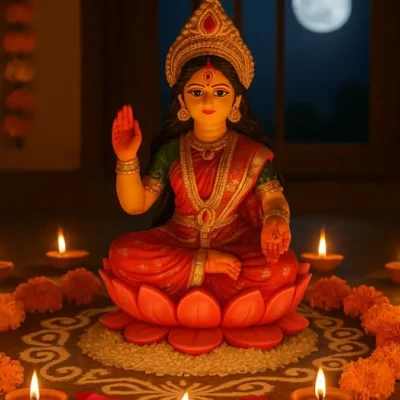Bhadravati Lakshmi Narasimha Temple – Karnataka

Address
Bhadravati Lakshmi Narasimha Temple – Karnataka
Bhadravathi, Bhadravati Taluk,
Shivamogga District,
Karnataka 577301
Moolavar
Lakshmi Narasimha
Introduction
Lakshmi Narasimha Temple is dedicated to Lord Vishnu located in Bhadravati City in Bhadravati Taluk in Shivamogga District in the Indian state of Karnataka. The temple is situated on the banks of Bhadra River.
Puranic Significance
The temple, which dates back to the 12th century CE, was built by King Vishnuvardhana of the Hoysala Dynasty. It underwent extensive renovations during the 13th century CE under the patronage of Veera Narasimha, who was the grandson of Hoysala King Vishnuvardhana. In ancient times, Bhadravati was known as Benkipura or Vankipura.
According to a legend associated with this temple, Lord Rama, the revered deity in Hinduism, once visited Ayodhya in disguise to ensure the well-being of his people in his kingdom. During this visit, he observed an unusual phenomenon – his shadow appeared in two forms, one as a Vanara (monkey) and the other as a human. Perplexed by this strange occurrence, Lord Rama sought the reason behind it and discovered that it was a consequence of his previous action of killing the Vanara king Vali. Vali, who was killed by Lord Rama while hiding behind a tree, had cursed him, leading to this peculiar shadow phenomenon. To seek relief from this curse, Lord Rama was advised to go to the sacred Tungabhadra River and install an Ishwara Lingam (a representation of Lord Shiva) in Vankipura. Following this advice, Lord Rama did so and was able to find redemption from his past actions. This legend adds to the temple’s historical and spiritual significance in the region.
Special Features
The temple is oriented towards the east and is elevated on a raised platform (jagati). This platform is supported by the backs of eight elephants, forming an ashtadikgaja arrangement. The temple is designed in a unique architectural style, featuring an 8-pointed star plan that is symmetrically rotated. It follows the trikutachala style, which includes three shrines: one facing north, one facing south, and one facing west. These shrines house different deities, with Lakshmi Narasimha in the western shrine, Purushotama in the northern shrine, and Venugopala in the southern shrine.
The central shrine, located in the western part, is the most prominent among them. All three shrines connect to a closed navaranga (hall) through antrala (vestibule). The ceiling of the navaranga is supported by lathe-turned pillars. These pillars, featuring four brackets, showcase an excellent blend of Chalukya and Hoysala architectural styles. The mukha mandapa (front hall) is supported by lathe-turned half pillars and parapets on either side. In front of the mukha mandapa, you can find the Dwaja Sthamba (flagstaff) and Garuda Sthamba (pillar dedicated to Garuda, the vehicle of Lord Vishnu). The temple’s exterior is adorned with numerous intricately carved sculptures, including depictions of deities such as Ganesha, Chandika, Bhairava, Harihara, Dakshinamurti, Nataraja, Durga in a dancing form, Mahisasuramardini, Rati and Kamadeva, Saraswathi, Brahma, Surya, as well as various apsaras (celestial nymphs), musicians, and dancers. These sculptures add to the temple’s artistic and religious significance.
Century/Period
12th Century
Managed By
Archaeological Survey of India (ASI)
Nearest Bus Station
Bhadravati
Nearest Railway Station
Bhadravati junction
Nearest Airport
Mangaluru









